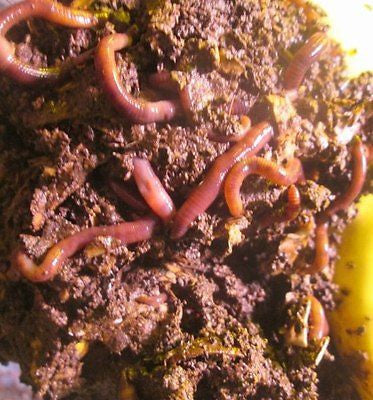Red Wigglers: Your Eco-Friendly Option for a Greener Yard
Red wigglers, or Eisenia fetida, present a sustainable approach to boosting garden wellness through vermicomposting. By incorporating red wigglers right into your gardening techniques, you can effectively handle waste while nurturing a lively environment.
(Lake Hickory Bait)
What Are Red Wigglers?
Although commonly mistaken for normal earthworms, red wigglers (Eisenia fetida) are a distinctive species recognized for their effectiveness in composting organic matter. These worms prosper in abundant, organic environments, such as compost heap and vermicomposting systems, where they play a critical role in damaging down waste. Unlike their more common equivalents, red wigglers choose a warmer environment, generally in between 55 ° F and 77 ° F, which maximizes their activity and efficiency.
Red wigglers are characterized by their reddish-brown coloration and segmented bodies, which can grow up to four inches in length. They possess a special ability to eat and digest natural products at an outstanding rate, refining as much as half their body weight daily. This rapid disintegration procedure not only enriches the dirt but also adds to the overall health and wellness of the yard environment.
In regards to reproduction, red wigglers are prolific, capable of generating cocoons that consist of numerous eggs. This enables quick populace growth, making them an excellent selection for composting ventures. Their flexibility and ravenous cravings for organic waste setting red wigglers as a crucial ally for environmentally aware garden enthusiasts looking for lasting techniques.
Advantages of Making Use Of Red Wigglers
Using red wigglers in the garden uses countless benefits that improve both soil high quality and plant health and wellness. These earthworms are extraordinary decomposers, damaging down natural issue such as kitchen area scraps and lawn waste right into nutrient-rich castings. These castings, often referred to as "worm gold," give essential nutrients that boost dirt fertility, promoting vibrant plant development.
Red wigglers also improve dirt structure. The presence of red wigglers boosts microbial activity in the soil, developing a prospering ecosystem that contributes to disease resistance and enhanced plant health.
One more substantial benefit of using red wigglers is their capability to lower waste. In summary, incorporating red wigglers right into horticulture techniques returns considerable benefits, making them an important enhancement to any type of eco-conscious garden.
(red wigglers eisenia fetida)
How to Begin Vermicomposting
To begin vermicomposting, it's vital to develop an ideal setting for red wigglers to thrive, as their success directly impacts the performance of the composting process. Beginning by selecting a container, such as a plastic or wood container, with appropriate drain and ventilation. A dimension of around 2 square feet is ideal for a home, permitting for a workable worm populace.
Next, prepare bed linen product that is moist but not excessively wet. Shredded newspaper, cardboard, and coconut coir are outstanding options, offering a comfortable habitat while also serving as a carbon source. Fill the bin with 4 to 6 inches of bed linen.
After establishing the bedding, present your red wigglers. A common starting population is about 1 pound of worms, which can consume roughly half a pound of food scraps daily. It is vital to include food scraps slowly, concentrating on vegetable peelings, fruit waste, and coffee grounds, while preventing meat, dairy, and oily foods to protect against smells.
Maintaining a Healthy And Balanced Worm Bin
Once your red wigglers are settled into their new bed linen, preserving a healthy worm bin comes to be critical to make sure optimal composting conditions. Preferably, the worm container ought to be kept damp however not soaked; a moisture level around 60-70% is ideal.
Temperature level control is equally vital. Red wigglers grow in environments in between 55 ° F and 77 ° F(13 ° C to 25 ° C) Avoid revealing the bin to extreme temperatures; extreme warm can eliminate the worms, while excessive cold can slow their task.
Aeration helpful resources is vital to protect against anaerobic conditions, which can result in undesirable odors and harm the worms. Transform the bedding delicately every few weeks to promote airflow and disperse food uniformly.
Feeding your red wigglers is an additional important aspect. Deal a balanced diet regimen of cooking area scraps, preventing citrus and spicy foods, which can be harmful to their health. By routinely monitoring these aspects, you can ensure a flourishing ecosystem within your worm container.

Tips for Making Use Of Worm Castings
Routinely incorporating worm spreadings right into your garden can substantially enhance dirt health and plant growth. To efficiently utilize worm spreadings, begin by figuring out the ideal application rate, which usually ranges from 10-20% of the complete dirt volume. This makes sure optimal nutrient availability without frustrating your plants.
When using worm castings, blend them right into the top couple of inches of soil around well-known plants or integrate them into your seed-starting mix for brand-new seed startings. Additionally, take into consideration producing a worm tea by soaking worm spreadings in water for 24-48 hours.

Conclusion
The use of red wigglers in horticulture techniques provides a sustainable method to squander administration and dirt enrichment. These composting worms not only convert organic waste right into beneficial nutrients however also improve dirt framework and promote a healthy microbial environment. By embracing vermicomposting strategies, gardeners can efficiently add to environmental sustainability while enhancing plant health and wellness. The assimilation of red wigglers into horticulture routines inevitably supports both eco-friendly balance and farming performance.